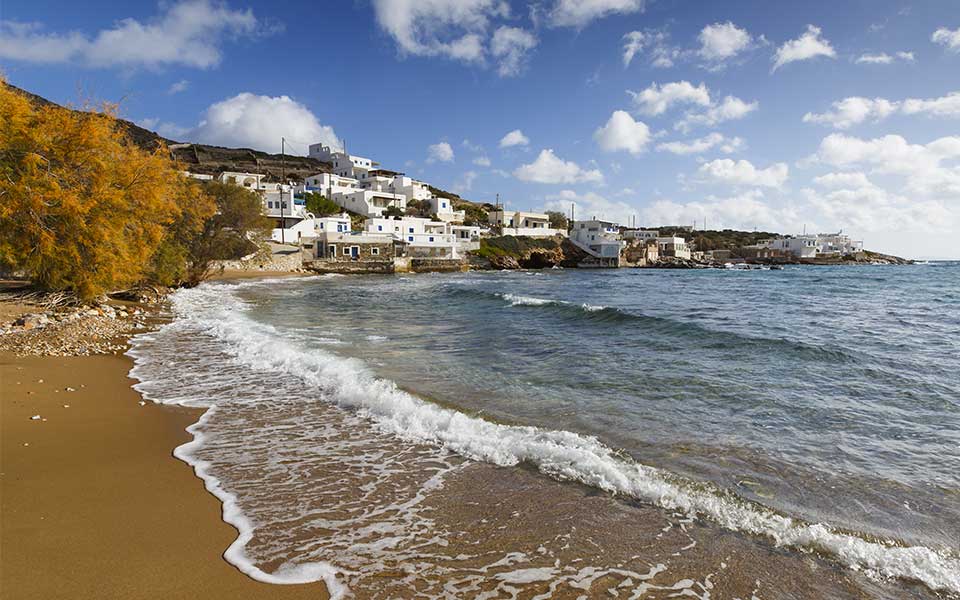How were the Cyclades in the past, before tourism became the main occupation of the islands’ inhabitants, before sun loungers and umbrellas took over the beaches and rampant development became commonplace? They were exactly as how Sikinos is today. Together with a few other islands, Sikinos, which is located between Ios and Folegandros, seems to be resisting the changing times. Maybe it’s because its inhabitants are taking care of their home or maybe it’s because the island’s geomorphology doesn’t allow for mass tourism. Whatever the case may be, Sikinos has managed to remain unchanged, so that the generations of today and, it is hoped, tomorrow can see how the Greek islands once were.
Sikinos continues to maintain its traditions, including that of the role of the “panigyra” (a person who, among other things, is responsible for organizing one of the island’s religious festivals). The people are mainly involved in the traditional occupations of beekeeping, fishing and agriculture (most of the farmland is terraced here). The local women still make their own sesame-seed candy, melitinia (small cheese-filled pastries) and candles, and, if necessary, can also cure sunstroke with a prayer!
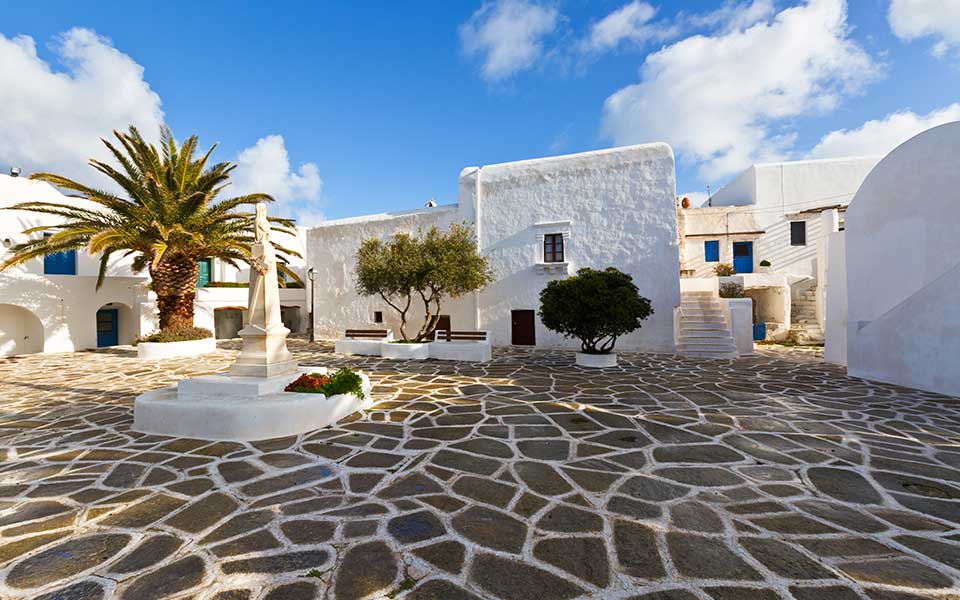
© Shutterstock
Sikinos has few easily accessible beaches. There’s only one village, and the inhabitants number no more than 200. This, of course, doesn’t mean that the island lacks in the services and amenities it offers visitors. There are new shops opening their doors all the time and the network of hiking trails is being continuously expanded. Over the past few years, the island has been organizing the Little Islands Festival, a summer festival that includes audio-visual projects and film screenings (this year, the festival, titled “Human Geographies,” was held on August 28-31). The main difference between Sikinos and other islands is that, on Sikinos, everything is done on a smaller scale, which is perfect for those looking for something quiet and simple.
The island’s port is located in the village of Alopronoia, where you will find some rooms for rent and a few small tavernas. You can also book a boat tour around the island here, or grab a boat-ride to the beaches of Malta, Santorinaika, Aghios Panteleimonas, Kara or Aghios Ioannis, none of which can be reached by car – the only beaches you can drive to are Alopronoia, Aghios Georgios and Dialiskari.
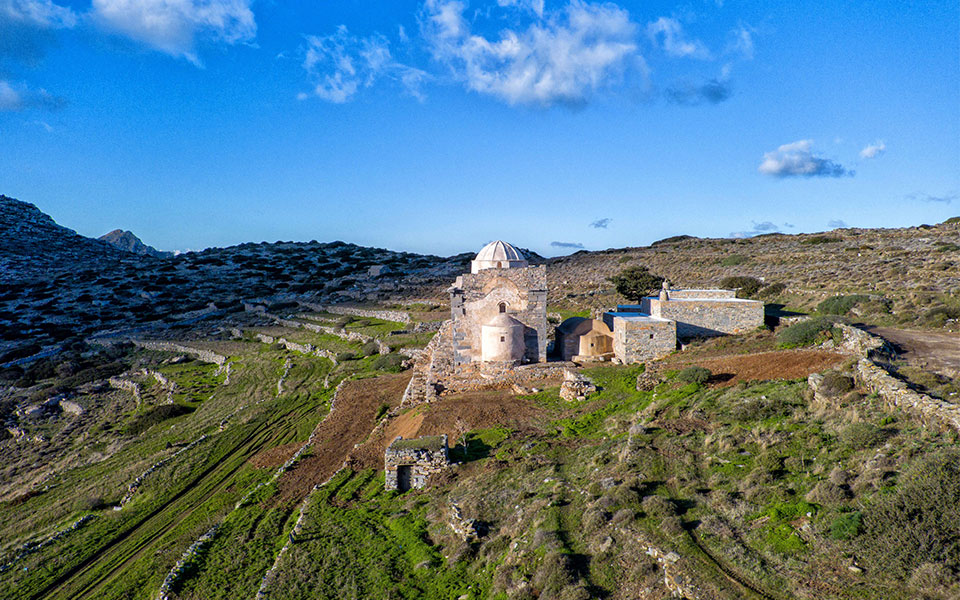
If you’re not in the mood for a ride on the waves, you can always take to the island’s trails; they’ve been cleared and clearly marked. The most popular trail, which you really should take at least once during your stay, is the one that leads to the famous Church of Episkopi, a 45-minute hike from Hora. The church opened its doors to the public in September 2022 after years of restoration works carried out by the Ephorate of Antiquities of Cyclades; the effort earned the European Heritage Award/Europa Nostra Award.
Seemingly comprised of pieces from different puzzles that somehow fit together, the Church of Episkopi is one of the most beautiful monuments of the Cyclades, and certainly one of the most enigmatic as well. Its history seems to date back to the 2nd or 3rd century AD, when it was built as a Roman mausoleum. In the 17th century, it was converted into a Christian church dedicated to the Dormition of the Virgin Mary. During excavation works in 2018, the grave of a woman named Neiko, dating from Roman times, was discovered. Objects recovered indicated that she was a noblewoman. The grave was found within the church’s double wall, protected from looters and antiquities smugglers. It was intact, unlike two other more modest graves that had been found despoiled in the crypts.
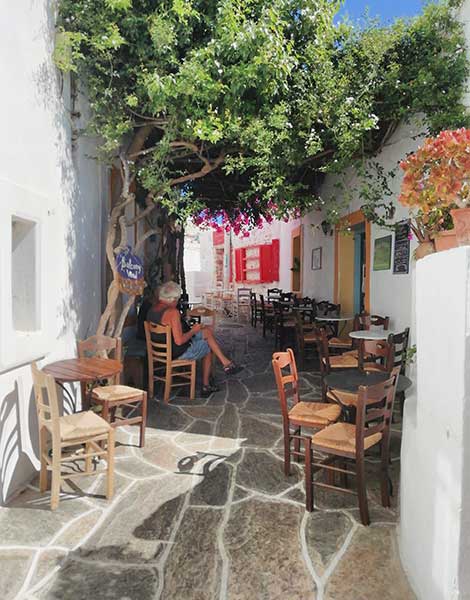
© Shutterstock
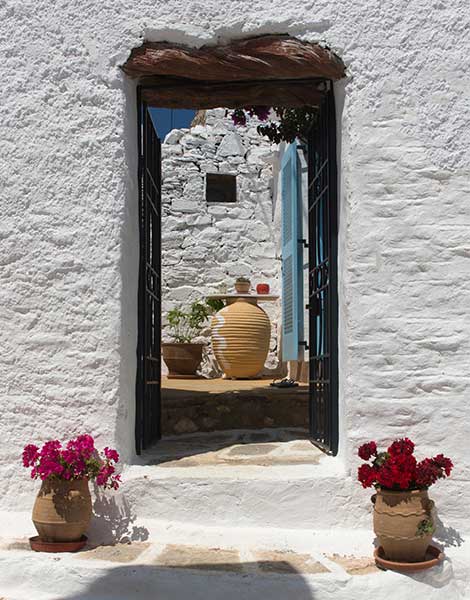
© Shutterstock
Apart from hiking and swimming, visitors can also enjoy pleasant walks in the streets of Hora. The town itself is divided into three areas: Kastro (“Castle”), Vouni (“Hill”) and Horio (“Village”). The Kastro district is considered the heart of the town, as most of the shops are located there. Of the medieval castle itself, only its secondary entrance survives. Most houses in Hora are whitewashed in typical Cycladic fashion, but there are some derelict unpainted stone houses scattered here and there, too, as well as some restored stone mansions.
Horio was where the exiles of the military regime of Ioannis Metaxa – a former Prime Minister of Greece – were sent. Today, most houses here have been bought by foreigners, who have restored them with respect to their original design, preserving their arches, cedar beams and clay chimneys.
The walk to the top of the hill of Hora, where a convent dating from 1775 and known either as Zoodochos Pigi or Chrysopigi is located, is very scenic. Today, the convent is home to only one nun. According to legend, back in the days when it was still a thriving religious community, pirates managed to enter Hora, reach the nunnery and breach its fortified walls. The nuns, they say, jumped over the cliff to avoid dishonor at the hands of their assailants. According to another, happier, version, the town’s inhabitants evacuated Hora via the convent, not by jumping but by climbing down the cliff with ropes. Today, you can enjoy beautiful views of the sea and the surrounding islands from the hill.
You can enjoy similar, if not more beautiful, views of the Aegean Sea, accompanied by outstanding wines, at the Manalis Winery, an establishment whose wines surpass expectations congruent with a small local winery. George Manalis and his family have revived old varieties (including Assyrtiko, Aidani, Monemvasia, Mavrotragano and Limnio) in their organic vineyards, while the winery itself, which draws on renewable energy sources, has a restaurant and an area that hosts art exhibitions.
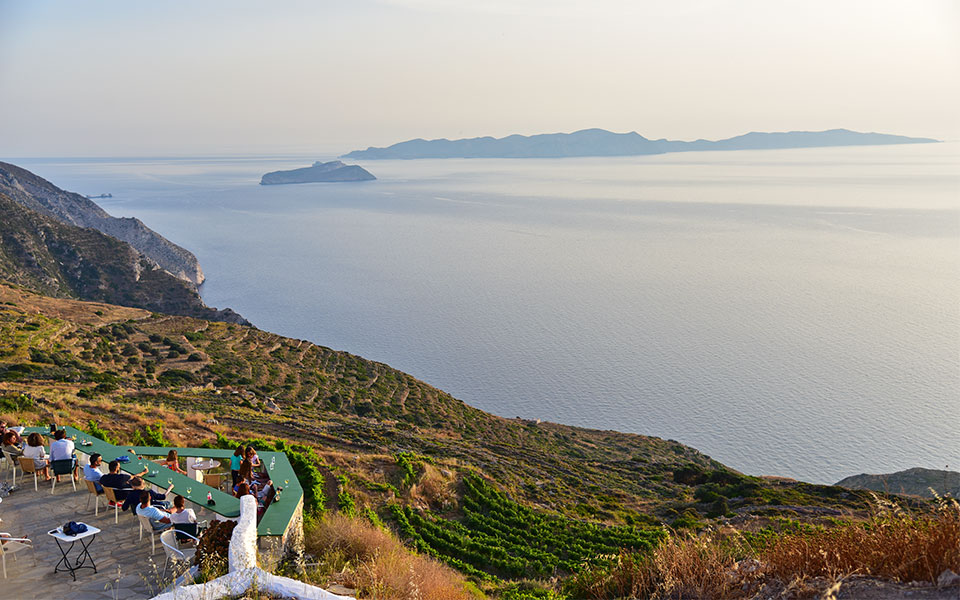
Beeswax candles and holy lists
The people of Sikinos are primarily occupied with beekeeping; the island boasts an apiculture cooperative. Apart from wonderful thyme honey, the bees of Sikinos also produce wax, enabling the local women to carry on the long tradition of making their own beeswax candles. After removing the wax from the honeycomb, they melt it in a large pot and then place it in a bowl to cool down. The wax is then heated anew over charcoal and scraped with a spoon. The women then skillfully work with the shavings, molding them around a wick. These candles are used to adorn the chandeliers of the island’s churches, and only beeswax candles and pillar candles are used during the island’s church festivals. It’s estimated that the women of Sikinos make more than 70 candles by hand for each church festival.
What’s even more impressive, however, is the fact that Sikinos continues to honor traditions such as that of appointing a “panigyra” (a person who, among other things, is responsible for organizing one of the island’s religious festivals). The island has four main religious festivals, and they are in honor of four icons (the Panaghia Pantanassa, the Exaltation of the Holy Cross, the Presentation of the Virgin Mary and the Zoodochos Pigi). For each of these events, a panigyra is elected. The panygira is responsible for keeping the icon in his home for the entire year, perfuming it with incense three times a day, making sure that the oil lamp beside it is always lit, and organizing and financing the annual festival in honor of it. He’s also responsible for whitewashing the church to which the icon belongs and for blessing the bread, as well as for providing the beeswax candles and the food that will be served at the festival.

© Shutterstock
The honor that the faithful feel and the desire they have to preserve this tradition are such that the waiting list of candidates for these posts is long. The icon of Panaghia Pantanassa, for instance, is so revered that many islanders don’t live long enough to host it in their house, despite having put their names on the list. In such cases, the obligation and the honor are passed on to their heirs. For the other icons, the names of children are added to the list from the day they are born and still they often have to wait until they’re in their thirties or later to perform this task.
A further peculiarity is that, while the lists contain only men’s names, the responsibilities are undertaken exclusively by the women, because it is the women who place the icon in a visible spot in the living room and adorn it with flowers and embroidered tablecloths. It is the women who perfume it with incense every day and, on the day of the festival, together with the rest of the island’s women, prepare the food, the desserts and the candles. The men are responsible for organizing the procession of the icon on the day the festival is held and for transferring the icon to the house of the new panygira. In both cases, all the faithful follow the panygira, essentially forming a solemn cortége. The festival of the Panaghia Pantanassa is celebrated on August 15th (it’s also celebrated a second time on the Sunday of Orthodoxy), while the festival of the Exaltation of the Holy Cross is celebrated on September 14th. The Presentation of the Virgin Mary is celebrated on November 21st, and the festival of Zoodochos Pigi is celebrated after Easter.

